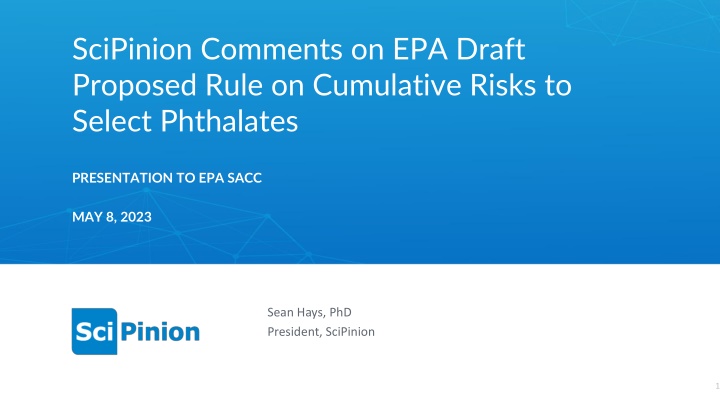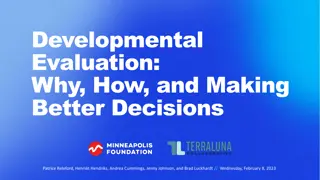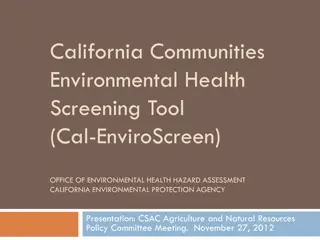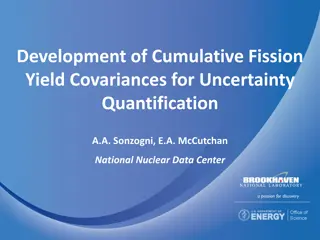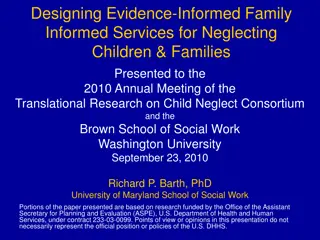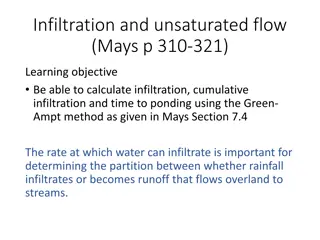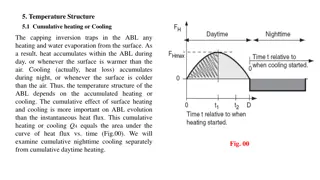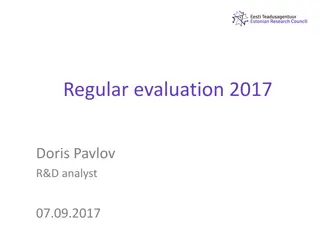Evaluation of Phthalates Cumulative Risks: Expert Insights
SciPinion presented findings and opinions on the EPA Draft Proposed Rule concerning cumulative risks associated with select phthalates. An expert panel, including former EPA scientists, shared perspectives on chemical grouping, the Phthalate Syndrome terminology, specific phthalates relevance, and the mode of action. Consensus was observed on some aspects while mixed opinions were noted on others, emphasizing the complexity of risk assessment in this domain.
Download Presentation

Please find below an Image/Link to download the presentation.
The content on the website is provided AS IS for your information and personal use only. It may not be sold, licensed, or shared on other websites without obtaining consent from the author.If you encounter any issues during the download, it is possible that the publisher has removed the file from their server.
You are allowed to download the files provided on this website for personal or commercial use, subject to the condition that they are used lawfully. All files are the property of their respective owners.
The content on the website is provided AS IS for your information and personal use only. It may not be sold, licensed, or shared on other websites without obtaining consent from the author.
E N D
Presentation Transcript
SciPinion Comments on EPA Draft Proposed Rule on Cumulative Risks to Select Phthalates PRESENTATION TO EPA SACC MAY 8, 2023 Sean Hays, PhD President, SciPinion 1
SciPinions Project on Phthalates Cumulative Risks 10 experts (5 repro/developmental, 5 mixtures/cumulative risks experts), including 5 former EPA scientists All experts are anonymous to each other - removes influences such as group think, deference, amplification, bully cheerleaders Experts are blinded to the sponsor (removes potential for sponsor bias) and sponsor has no knowledge of the experts identities. IDs will be disclosed upon completion of panel deliberations. All experts answer all questions in their domain (R/D, mixtures) eliminates potential for numerous small N panels Currently completed round 2 of a three-round (modified Delphi) process Round 1: Review EPA report and answer charge questions Round 2: Review answers from all experts and conduct online debate Round 3: Revisit R1 answers and answer follow-up/clarifying questions Available to answer charge questions from SACC >30 charge questions, full report submitted to EPA once completed 2
Is chemical grouping of select phthalates useful for improving human health risk assessment for developmental endpoints? (Question 2.1, interim results) Clear consensus from the panel that this approach is useful 3
Phthalate Syndrome - Terminology While panelists are in agreement that the terminology phthalate syndrome is appropriate for the informed (toxicology, risk assessment) audience, they question appropriateness for communicating to general public. Panelists recommend distinction of calling this the Rat Phthalate Syndrome or use the NRC terminology of androgen insufficiency syndrome which can be caused by some phthalates. 4
DEHP, BBP, DBP, DIBP, DCHP, DINP, DIDP Panel agrees with EPA s exclusion of DIDP DINP is subject to debate DEHP, BBP, DBP, DIBP and DCHP appear relevant to include 5
Figure 5. Is the mode of action for phthalate syndrome sufficiently robust/reflective of best available science to support the identification of a most sensitive effect that is applicable to all members? (Question 1.4, interim results) Panel opinions on the robustness of the proposed MOA are mixed Many experts recognize there is no common MIE, pathway or quantitative relationship between MIE and AO 6
Figure 3. If an RPF approach is adopted, which phthalate do you believe should serve as the index chemical?(Question 2.4, interim results) A majority of the panelists would support the selection of DEHP as the index chemical if an RPF approach is adopted 7
Figure 2. EPA's proposed target populations include exposures at different stages including pre-pregnancy (e.g., women of reproductive age), pregnancy (e.g., pregnant women) and post-pregnancy/early-life (e.g., male infants, toddlers, and children). How should exposure concordance with the toxicity studies (pre-pregnancy, pregnancy, early-life) be maintained? (Question 1.10, interim results) Clear consensus from the panel that exposure concordance should be maintained 8
Figure 4. Should NHANES biomonitoring data be used to support a Biomonitoring Equivalent (BE) approach for phthalates? (Question 2.7, interim results) A majority of the panel consider a BE approach is useful for phthalates 9
New Charge Questions Suggested by the Panel Human relevance of the endpoints was discussed in many of the panelist s answers across charge questions. Two panelists specifically suggested the inclusion of additional charge questions for their fellow panelists to consider on this topic: Is there sufficient evidence that a similar MOA is relevant to humans or is this fairly specific to male rats? The existence of a phthalate syndrome (PS) seems to be well established in the rat models. There are demonstrated species differences in responses in various assays as well as in metabolism of some phthalates. The data from both epidemiology and human studies are rather sparse. Does this affect your confidence in applying PS observations to human health risk assessment? The SciPinion panel will be answering charge questions on human relevance in Round 3 10
Next Steps Our panel will answer follow-up clarifying questions Optional The SciPinion panel can be made available to answer science questions from EPA and the SACC A full report of our panel deliberations and opinions will be provided to EPA 11
